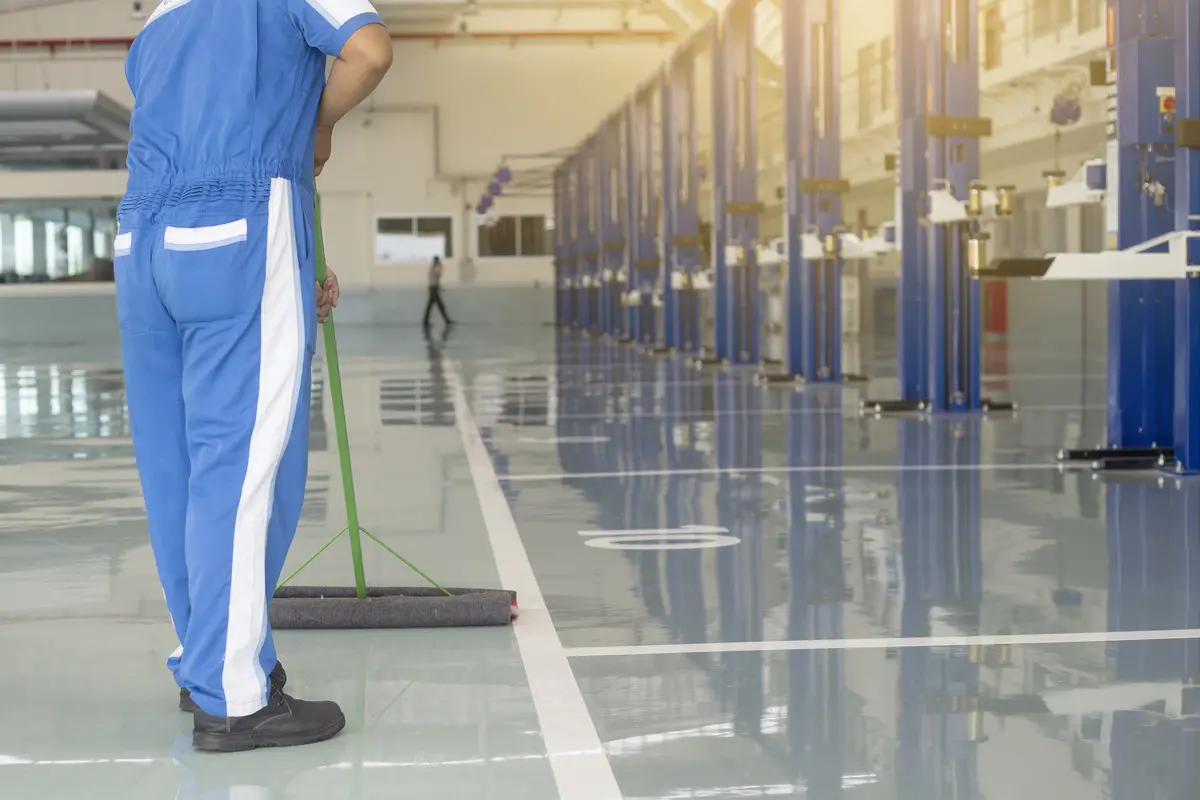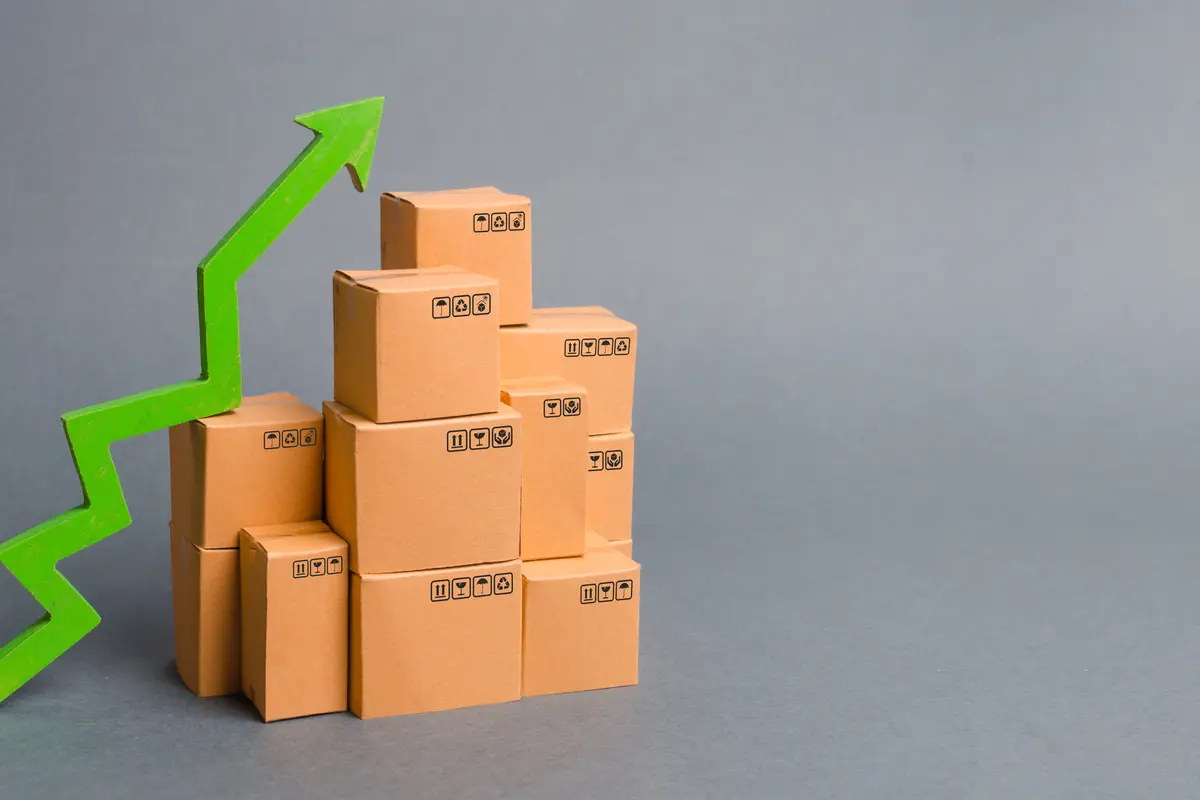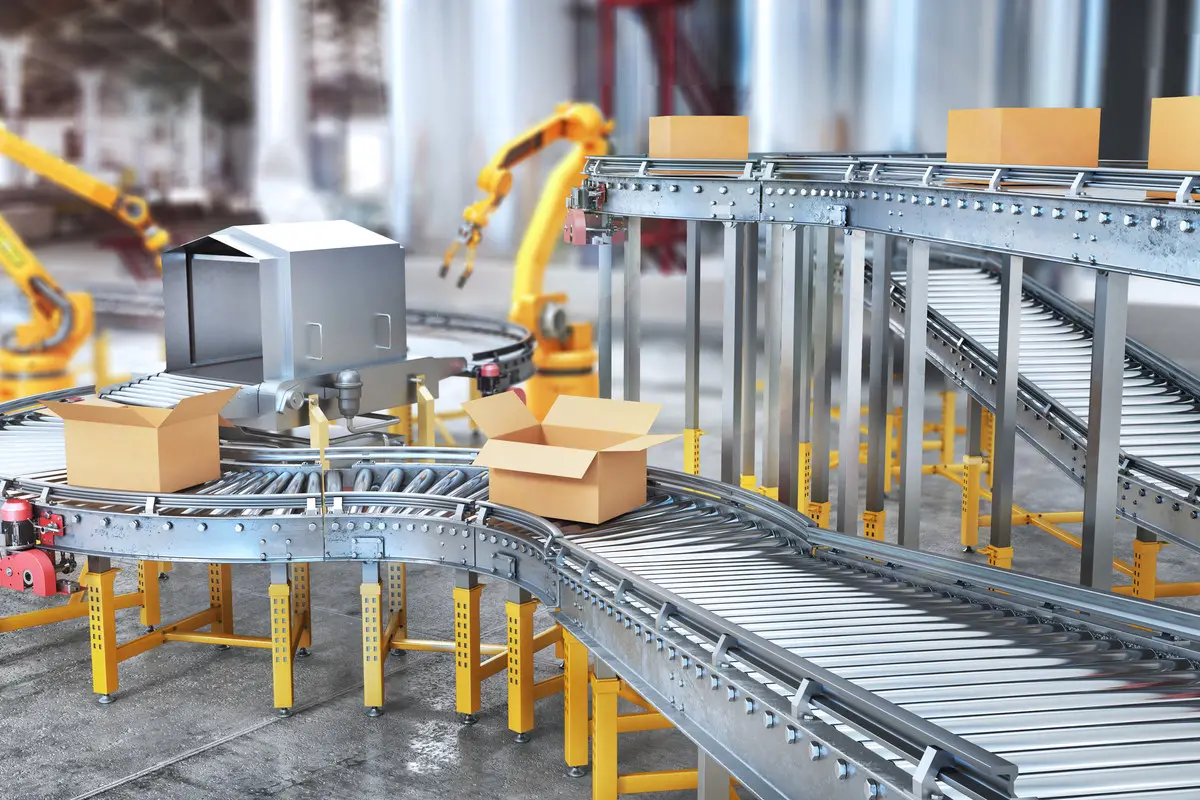Table of Contents
- Clean Up Your Facility
- Remap Floor Plan Layout
- Optimize Storage Capacity
- Understand Your Inventory
- Standardize Wherever Possible
- Automate Your Small Warehouse
- Shelf and Tray Picking ASRS
- Bin and Tote Delivery ASRS
- Robotic Delivery ASRS
- Determine Timeline
- Use Digital Automation
- Use Physical Automation
- Employ a Warehouse Management System (WMS)
- Improved KPIs
- Integration
- Conclusion
The key to a successful business is having an organized setup. That’s never more true than in the warehouse, the backbone and foundation of a retail business.
Having a disorganized warehouse can affect the production and productivity of your company. On the other hand, cleaning, organizing, and labeling your warehouse can make it seem larger by creating more space for extra storage or more room for merchandise and products.
There are several ways to get started. Here are some small warehouse organization ideas.
Clean Up Your Facility

While there’s probably no garbage all over your warehouse floor, there still may be junk hiding and wasting space.
- Get Rid of Unused Items and Inventory: Sometimes, the only way to start organizing is by cleaning. Your company can start by cleaning up the facility by getting rid of unused items and inventory. You can create a checklist sheet to take notes on what you removed, recycled, or returned. This can be helpful later if you run into a situation where you need to refer to what items were discarded or removed. This effort does not have to be done by oneself.
- Make Sure Everyone Helps: This process should be a collaborative effort because your entire warehouse team should know where the products and inventory are placed. Making sure everyone helps out is crucial to a successful and more efficient organizational process. Additionally, it is important to ask your team for their feedback to make sure they feel safe and happy.
Remap Floor Plan Layout
It’s usually advised that a company updates its warehouse design ideas every few years. A good place to start is with the floor plan layout, making sure it meets the needs of the company’s current size and complexity.
- Label Everything and Put Up Sign: There are several ways to set up warehouse inventory, with labeling being the most crucial to achieving an optimal and organized warehouse. After your warehouse is clean and tidy, your team can start by labeling the stockroom and by putting up signs. These labels and signs should be clearly visible, concise, and easy to read. A tip for putting signs up is to arrange them by row and column. Your team can set up aisles and set up storage racks for your products. It is important to consistently replace these labels as your inventory changes to reduce errors and misplaced inventory. Equally important, your team should focus on maintaining a safe work zone. It is beneficial to install signage in compliance with safety restrictions.
- Give Your Team Members Maps: Labeling and marking these rows or columns on a map or chart can also be helpful. It can help minimize questions from new hires or seasonal employees about where certain products or items are located. Providing maps to your team can also boost productivity. Your team will know where each product is and will be able to get the product efficiently and effectively.
- Focus on Receiving: Operating a small warehouse means your team will be receiving many packages. As a necessary part of your shipping and receiving department layout, it is important to mark and review all packages coming into and out of the warehouse. Taking note of all inventory coming in is equally important as taking inventory of items going out. Your team could create a checklist for your receiving processes, such as if the items are in good condition, time of arrival, and inventory stock. This can be important to reference in the future, so it is important to take inventory. It will also help when inputting data into an automated system.
- Create a Process for Returning:There should be a process to handle return packages. Inventory should be taken when these packages arrive. Allow for expedient repackaging or refurbishing where necessary, making it as easy as possible to ship the items back out again. Keep these items documented, as you may need to refer to the paperwork later in the future.
Optimize Storage Capacity

Most warehouses are filled with wasted space. That’s money left on the table.
- Get the Most from Your Space – With your warehouse clean and labeled, it is time to optimize your storage capacity. A simple equation tells you the maximum amount your facility can hold:
Height x Width x Depth = Storage Capacity
Take into account how much space you have on each storage rack and the spaces between each shelf. To maximize storage capacity, your team will need to figure out how much space is not being used so you can move things around to get the most from your space.
- Go Vertical։ Try going vertical for your shipping and receiving department layout. For rectangular-shaped buildings, going vertical is ideal. If you place all your storage shelves and racks vertically, it can maximize space and make your warehouse look tidy. Take appropriate measurements so that your shelves are optimized to make the most out of your warehouse space.
- Don’t Overload։ Although it is good to maximize your storage space, it is also important that you do not overdo it. Try not to overload your small warehouse with too many items as it may create an unsafe working environment. Combine smaller products by using totes, bins, and dividers. Otherwise, things could get lost or misplaced if you have many smaller items on larger shelves.
- Six-Inch Beam Placement։ Optimize space to the fullest extent with the six-inch beam placement method. The space between the top of your products and the racking beam is required to be six inches tall for the forklift. Measure your spacing so that it is exactly six inches tall. If you have eight inches in that space, you have an extra two inches for storing items. Take advantage by adding more inventory to your warehouse.
Understand Your Inventory
To know how to set up warehouse inventory, you need data on how your products are selling. You can get that by classifying your inventory and organizing for efficiency.
- Classify: Start by classifying your inventory by size, shape, and quantity. Take notes of how often each item is restocked and how often it goes out. You can classify your inventory by subcategories of ratings: A (sold quickly), B (sold normal), C (sold slow), and D (sold very slow). Once your team has classified your products, a cost breakdown is important. Find out how much money is allotted into your C and D products. Cut down on restocking those, and focus more on restocking A and B. This will further boost your sales and profits in the company.
- Organize for Efficiency: Likewise, it is also important to organize for efficiency. When you classify your inventory, you can organize your products and goods by categories, such as moving products classified as A or B to the front and C and D towards the middle to the back. This process makes it easier for your employees to reach items.
Standardize Wherever Possible
Some warehouse storage ideas have been popular for centuries, and it’s easy to see why. Standardizing your shipping containers and using void systems are tried and true methods for increasing efficiency.
- Shipping Containers: Companies that use shipping containers can maximize space by stacking containers from corner post to corner post, above and below. Shipping containers should be sorted by size. Try to stack the same-size boxes together. A 40-foot box can go on top of two 20-foot boxes. It is important to stack the heavier box on top, so the stack does not collapse. Additionally, make sure there is enough room at the top for a forklift to come in and retrieve the boxes. You can also use lashing rods to prevent the boxes from sliding during transit. These help by locking the containers in place, keeping them stable.
- Void Systems: A void system is how you fill the space inside your packages. Using paper filling is one way to keep your products safe during shipping while keeping your packages standardized. However, other void systems may be more cost-efficient. As long as your void system decreases damage rates and is easy for your shipping staff to use, it should help optimize workflow.
Automate Your Small Warehouse

There are different types of automated storage and retrieval systems (ASRS). These can help your warehouse perform more efficiently and effectively. ASRS can also help minimize theft and protect your inventory, and it requires less floor space, so there is more room to maneuver around. This process happens by using an ergonomic workstation to deliver products or items directly to you by pressing a button. Here are the most popular options.
Shelf and Tray Picking ASRS
- Vertical Carousels: Vertical carousels are comprised of a series of shelves that use a chain drive that is motor-powered to travel in a vertical loop. These shelves fit packages and other supplies. Different models offer different carrying capacities and rotation speeds.
- Horizontal Carousels: Horizontal carousels have storage bins on mechanized shelves that travel in a horizontal loop. Most horizontal storage systems can handle items weighing up to 200 pounds. Horizontal carousels are typically installed in groups as they work more efficiently with more of them. You can also install doors on them, so they operate in an enclosed space.
- Vertical Lift Modules (VLMs): The vertical lift module is similar to the vertical carousel as the mechanism is based on height. Packages are stored on each level platform and brought down by an interior crane. The crane acts as an operator to bring a column of trays that the user needs. Most of the modules work relatively fast at speeds from 125 to 475 items per hour and can hold up to 2,200 pounds.
Bin and Tote Delivery ASRS
- Crane-Based Mini-Load AS/RS: Crane-based mini-load ASRS machines are made to handle lightweight loads. This device is used to handle cases, totes, and trays weighing up to 750 pounds with speed rates ranging from 60 to 100 lines per hour. This machine transports items on rails or wheels to deliver packages in a speedy time to the operator.
- Vertical Buffer Modules (VBMs): Vertical buffer modules work by encasing an area designated for smaller appliances. An interior crane will take items out to the operator by using a movable mast. The operator of the machine can queue up the next items for efficiency. The great thing about vertical buffer modules is that when replenishing stock, the machine does not have to be interrupted during handling.
Robotic Delivery ASRS
- Robotic Shuttle: Robotic shuttles travel around different levels on rails to get to each storage area. These robotic shuttles retrieve the packaged items at speeds ranging from 200 to 700 lines per hour and can carry around 35 to 65 pounds of goods. They are also flexible and scalable, which means they can reach areas and modify as things change. The robotic shuttles deliver these items to the operator.
- Floor Robots: Floor robots are mechanized devices that bring items to you. An operator controls the robot by giving it an item from a shelf, and the robot returns the item to the proper storage space. Different models of floor robots can carry varying weight capacities ranging from 1,000 pounds to 3,000 pounds and have a speed range of 100 to 300 lines per hour. These are helpful for heavier products in comparison to robotic shuffles.
Determine Timeline

When automating your warehouse, the first step is to set up a timeline. Since this will require a lot of space in your small warehouse to get started, it is important to create a schedule of when that space will be available. This is to let your employees and team know to leave that area clean and to designate other areas for certain sections such as shipping and receiving.
Use Digital Automation
Digital automation, in short, is a way to use software to automate processes. It is possible to digitally automate everything from data collection to information routing to activity tracking. It puts the software in charge of these simple tasks, freeing up more of your time.
Use Physical Automation
Physical automation includes mechanized technology. This includes using robots or robotic systems to automate small warehouse operations. This type of automation is more expensive than digital automation as it requires advanced machinery. Types of this type of automation include driverless automated guided vehicles (AGVs), autonomous mobile robots (AMRs), fetch robotics, and goods-to-person (GTP). Digital and physical automation work by decreasing the amount of tasks employees perform that are repetitive and time-consuming.
Employ a Warehouse Management System (WMS)
Some warehouse organization ideas include adopting a warehouse management system (WMS). This takes the data from your warehouse and classifies and sorts your inventory into subsets and categories. It also calculates and determines what storage methods work best for your space and determines the best possible way to track inventory and movement from shipping and receiving.
The sooner your team creates a WMS, the more efficient your team will be in the optimization and functionality of your warehouse. To adopt a WMS, you will need real-time inventory tracking for all your supplies and products, locations of inventory, SKU movement, and operator statistics. Here are specific ways a WMS can help you manage your warehouse.
Improved KPIs
Warehouse KPIs (key performance indicators) help you plan for month-to-month improvements and identify areas that need improvement in your warehouse procedures. Addressing and maintaining KPIs can help improve business costs, employee satisfaction, and customer satisfaction. A warehouse management system can improve KPIs by optimizing inventory management, so your team is aware of warehouse and inventory turnover.
- Forecasting: Forecasting is the prediction of how well a company will sell items or goods. Inaccurate data and forecasting can lead to overstocking on certain products, so it is important to get the most accurate forecasting results. Your team should periodically review the forecasting results and recalibrate with up-to-date information and data. You can forecast by using data such as SKU (stock keeping unit) levels, sales regions, channels, and actual sales. Keep updating this information for the best forecasting results as it changes all the time due to consumer demands, trends, and price fluctuations.
- Organization: A WMS assists in organizing your inventory. A WMS assists your team in sorting your items and also assists you in locating those items when you need them. The system will also sort items to different floors and shelves for you. It can also generate purchase orders when you are running low on stock.
Integration
WMS software comes as either a standalone solution or an ERP module. ERP modules are more expensive and complex as they tend to be used in larger operations. Your company will have to pay for licensing, setup, maintenance, and potentially an IT team to regularly monitor the software. There is also WMS “Light,” which functions similarly to ERP but does not cost as much or require as much upkeep. Integrating a WMS can be difficult and may require additional help, but it can make a huge difference in your warehouse organization.
Conclusion
Optimizing your small warehouse organization can seem overwhelming at first. It can help break the process into small pieces. You could choose a couple of things that you want to get started on first, such as cleaning a section of the warehouse. Small things, such as changing signs and labeling can make a huge difference in any work environment. Sometimes the best way to start is by taking baby steps. Start organizing today and optimize your workflow efficiency.
Table of Contents
- Clean Up Your Facility
- Remap Floor Plan Layout
- Optimize Storage Capacity
- Understand Your Inventory
- Standardize Wherever Possible
- Automate Your Small Warehouse
- Shelf and Tray Picking ASRS
- Bin and Tote Delivery ASRS
- Robotic Delivery ASRS
- Determine Timeline
- Use Digital Automation
- Use Physical Automation
- Employ a Warehouse Management System (WMS)
- Improved KPIs
- Integration
- Conclusion


